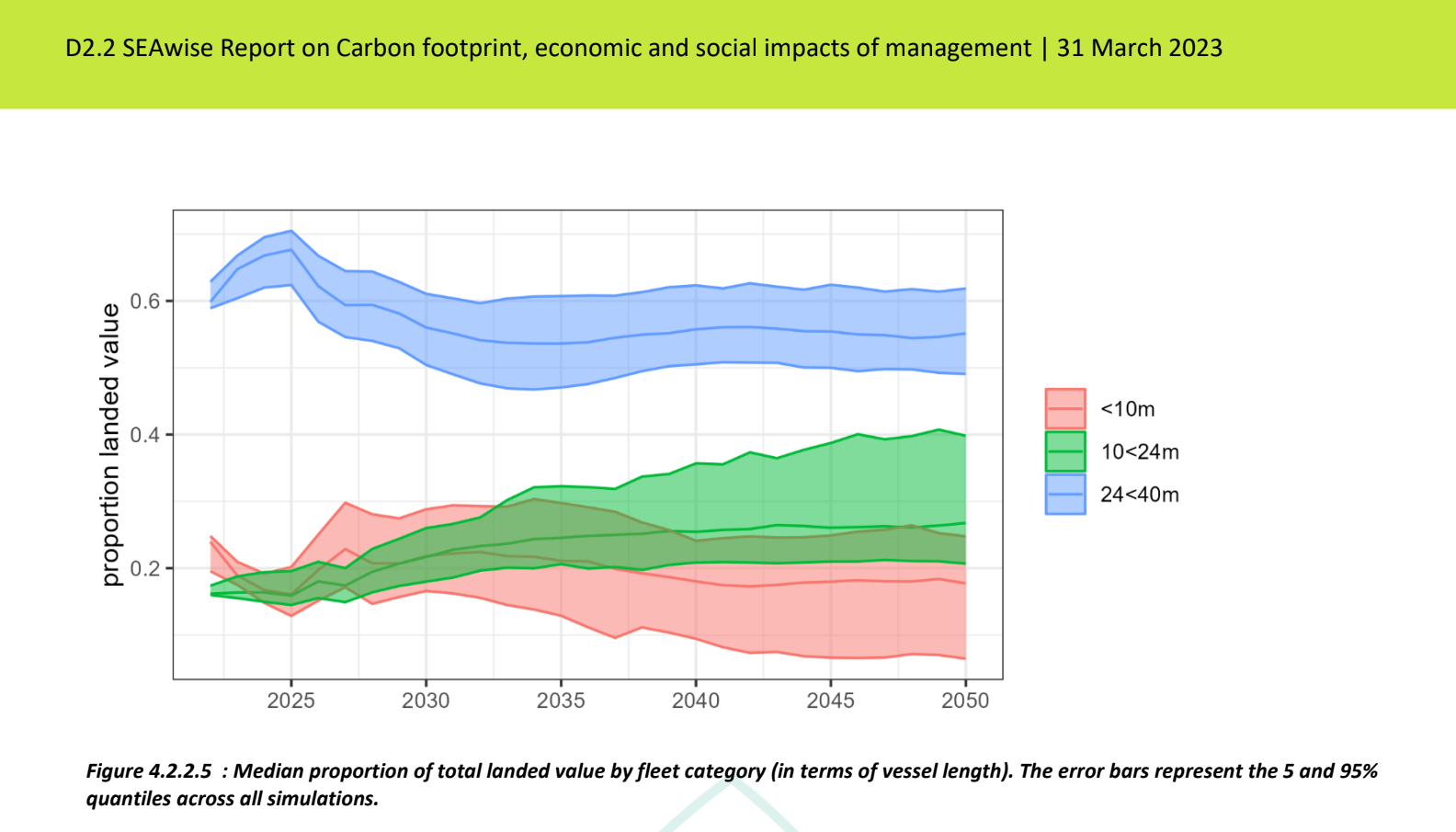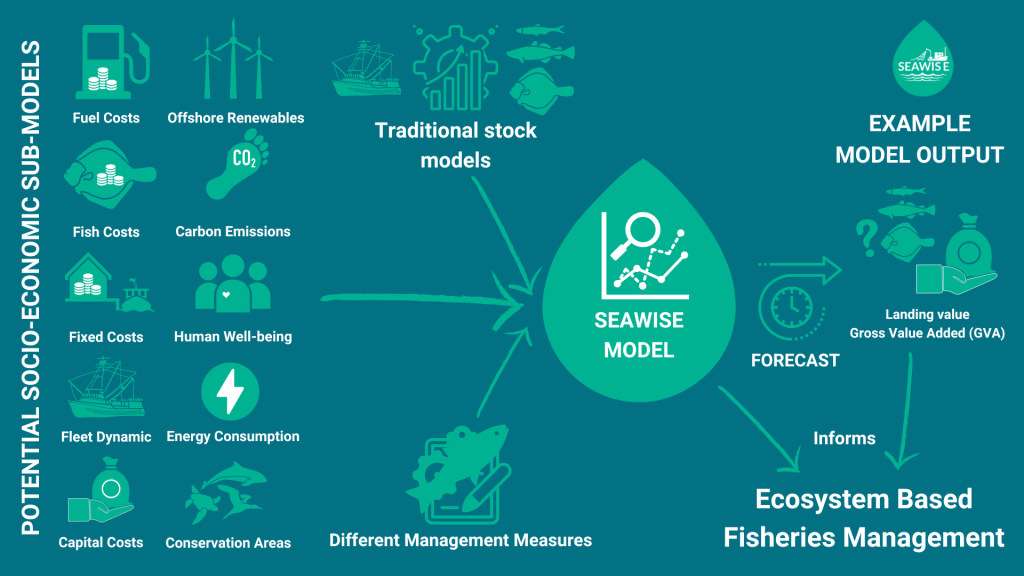In our previous blog Models for Success we introduced models, what they are and what they do. We also revealed that they are a ‘key ingredient’ in Ecosystem-Based Fisheries Management (EBFM) and our work at SEAwise. In this blog post, we present a case of SEAwise models in action and showcase how we are developing and using models to predict social, economic and ecological impacts of different fisheries management strategies. In turn, policy makers can use this information to make decisions in support of secure, sustainable fishing livelihoods and healthy marine ecosystems across Europe.
The need for models within EBFM
There is no one-size fits all model for fisheries management. And, as we work to develop tools to support ready-for-uptake advice, we are enhancing existing models, to widen the traditional management advice toolkit. Social and economic aspects of fisheries, for example, are often overlooked by fisheries models. Recognising these as interdependent, EBFM seeks to address this by including both social and ecological objectives.
As part of our initial review with stakeholders, we identified the key socio-economic aspects of fisheries impacted by fisheries management. Included among the critical aspects highlighted were profits, employment, fuel costs, small-scale fisheries and coastal communities. Positively, research by SEAwise has also shown that models which can accommodate social and economic elements such as these, alongside ecological elements, are available.
Enhanced modelling: A case study
Building on this knowledge, in an effort to offer insights into some of these key socio-economic elements (identified above) an important part of SEAwise’s work has been the refinement of the social and economic information used in our models. Because context matters and differs across European regions (and fisheries) this work also involves drawing on region-specific social and economic data, and applying our models to these contexts.
Carried out under SEAwise’s Social and Economic Effects of Fishing work theme, our work on the carbon footprint, economic and social impacts of fisheries management strategies, for example, sought to improve our understanding of some of the broader, and often unintended impacts of fisheries management measures on society. Here we used social and economic data to build smaller models (which modellers call sub-models) to enhance the principal ecosystem models in each region being used as part of SEAwise.
What did we do, and what have we learned from our models?
To test this new model, next we explored how different measures aimed at controlling fishing limits (known as harvest control rules) impacted the value of catches landed into port. To do this, we modelled future landing values based on a scenario of fixing Total Allowable Catches (TACs), via existing Harvest Control Rules (HCRs), which aim to manage the fishing effort of fleets. The results were differentiated by vessel length. The economic performance of vessels was found to be generally linked to its size.
The analysis showed that catches decreased for most stocks under the existing HCR approach with respect to the current value. How did this translate into catch value for different fleets?
Though the analysis indicated that, for most fleets, catches would result in broadly similar economic outcomes, differences between fleet size categories were observed. Simulations indicated that over time the proportion of the landed value captured by larger vessels (10-24m) would increase in the long term, while for smaller vessels this would remain broadly similar. For the largest vessels (over 24m) the proportion of value captured was predicted to decrease with respect to the current value.

Visualising models in action

From models to region specific fisheries management
Where to next? At the beginning of our scoping work we identified the need to incorporate social and economic data into our wider models; here we have seen one example of where this data has been integrated into SEAwise models. This will help us to evaluate the socio-economic impact of different management measures under climate change in the SEAwise themes Social and Economic Effects of and on Fishing, and Evaluation of Fisheries Management Strategies in an Ecosystem Context.
In a context whereby the European Commission is looking to make the gradual switch to low-carbon, renewable energy sources for fishing fleets, this knowledge can help better understand the relationship between management measures and the socio-economic impacts and carbon footprints of fisheries. Ultimately, these models can support managers to implement measures aimed at minimising the carbon footprints of fisheries, help facilitate fleet adaptation and ensure sustainable and profitable fisheries for communities which rely upon them.
In all, this work is an important step towards application of these new SEAwise models within our EBFM Tool and Toolbox, which will support policy advice.
To explore the rest of the social and economic effects of fisheries modelled across our Case Study regions, you can read the summaries and reports here.
Stay up to date with SEAwise news and research, hear about upcoming events, and receive updates on fisheries news from across the European seascape.